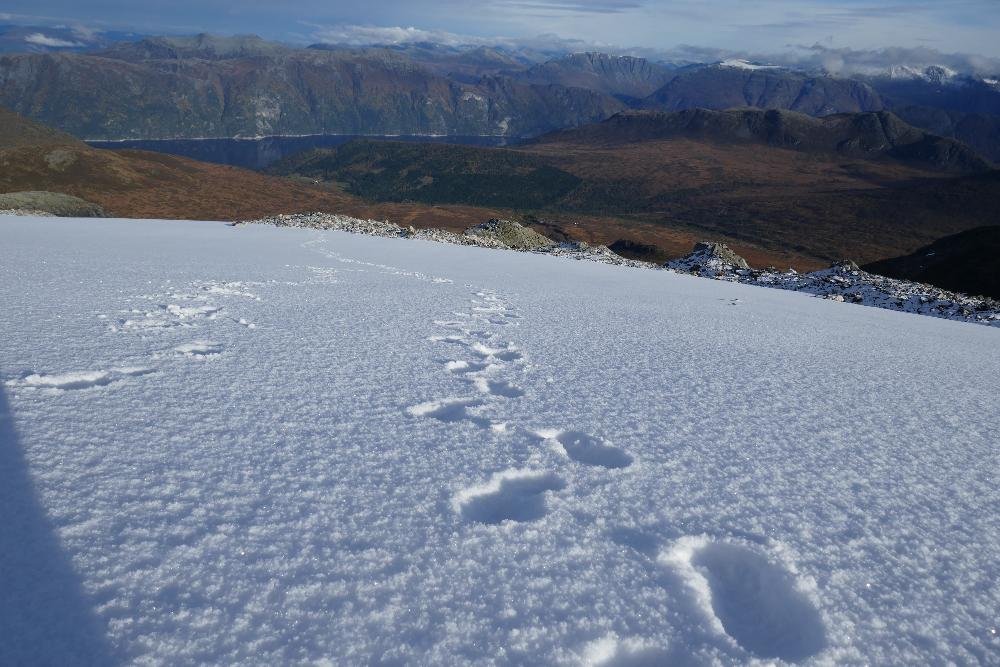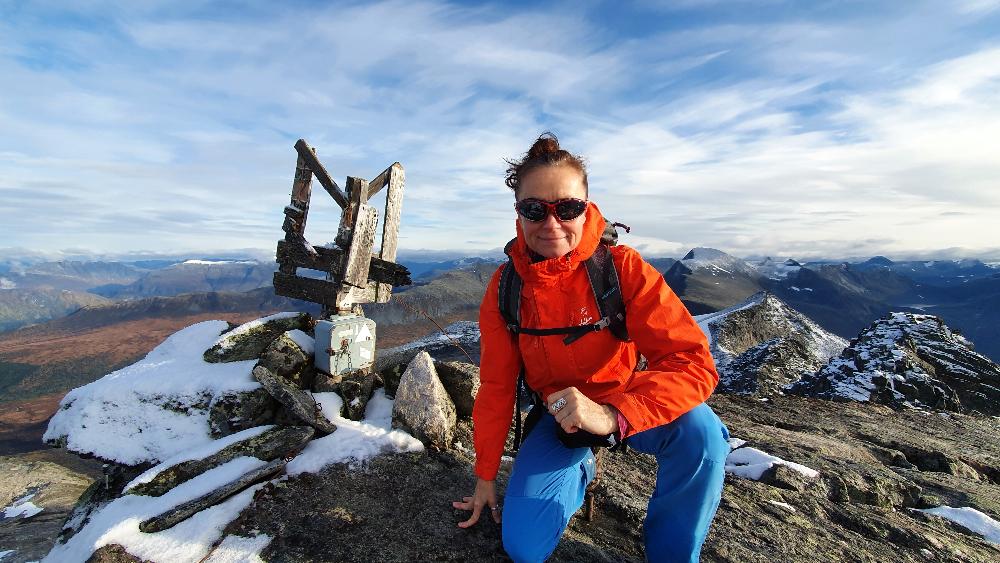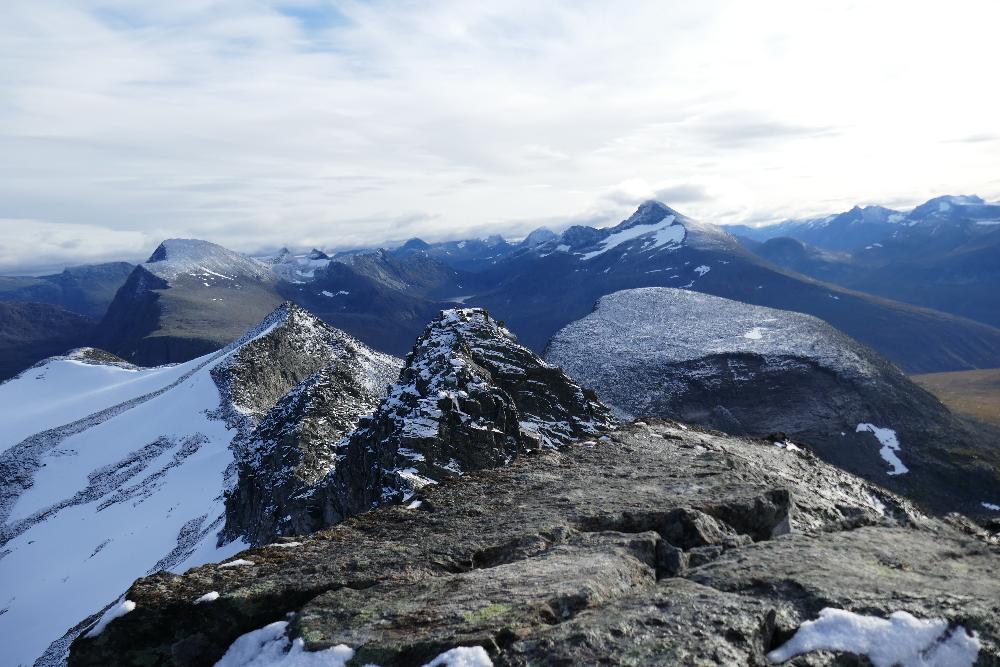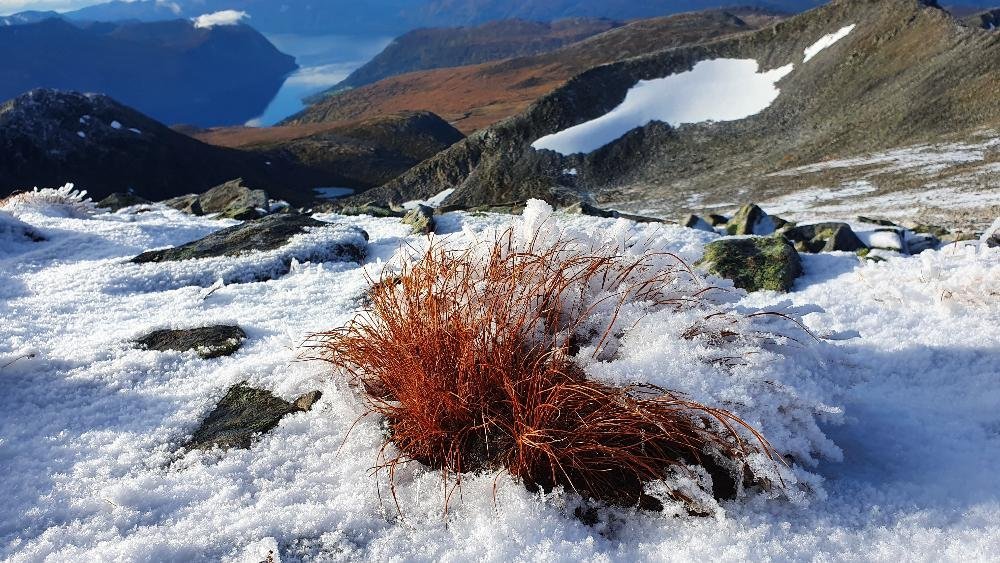Bhutan, known as the "Land of the Thunder Dragon," is one of the world’s most unique and enchanting destinations. Nestled in the eastern Himalayas between India and China, this small kingdom is renowned for its untouched landscapes, rich spiritual heritage, and a solid commitment to preserving its natural environment. Bhutan’s "Gross National Happiness" philosophy of GDP offers travelers a rare glimpse into a society that prioritizes well-being, sustainability, and cultural preservation.
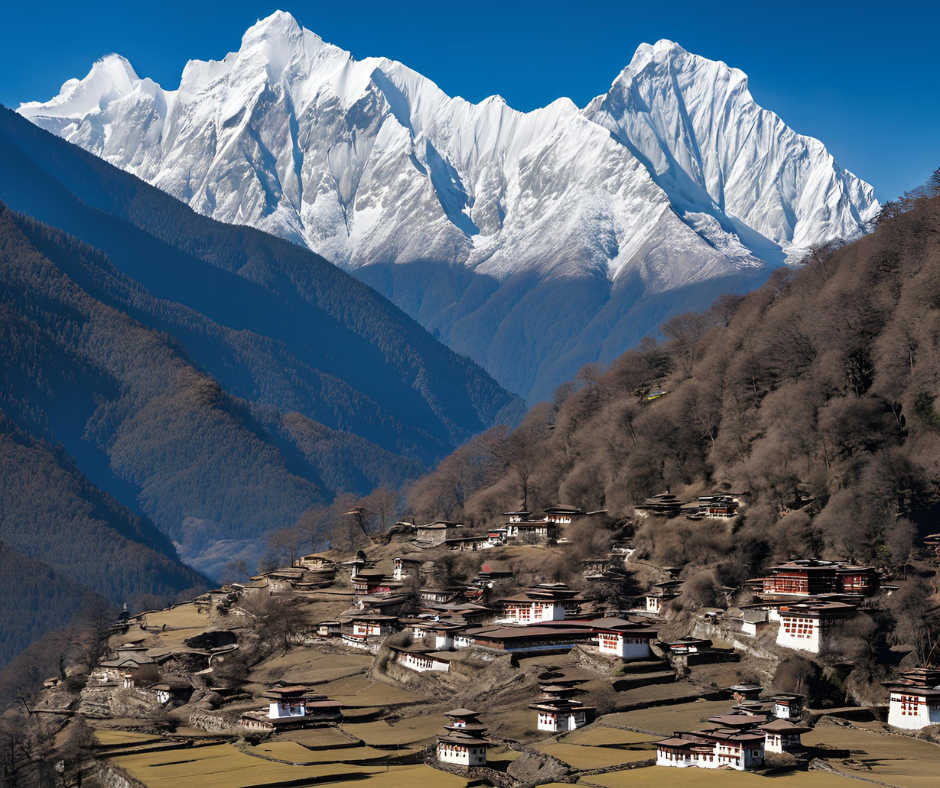
If you’re seeking an adventure that combines trekking, yoga, and a deep dive into local culture, Bhutan is the ideal destination. This remarkable country should be at the top of your travel list, so our Trekking and Yoga Retreat in Bhutan is the perfect way to experience it.
Why Bhutan?
1. High Value, Low Impact Tourism
Bhutan opened its doors to international tourism in 1974, but the country has always taken a cautious approach. Its guiding philosophy of "high value, low impact" tourism ensures that the environment, culture, and way of life remain largely unspoiled. This also means visitors experience Bhutan authentically and meaningfully, free from crowds and commercialism.
Since reopening its borders in 2022, Bhutan has continued its commitment to sustainable tourism, which makes it a more exclusive and less touristic destination. While it may be more expensive than other destinations, the investment is worth it for your once-in-a-lifetime experience.
The Unique and Fascinating Facts About Bhutan: What Makes Bhutan So Special
Cross-National Happiness: A Unique Development Measure
Perhaps Bhutan's most distinctive aspect is its dedication to Gross National Happiness (GNH) over Gross Domestic Product (GDP). Introduced by Bhutan’s fourth king, King Jigme Singye Wangchuck, GNH is a holistic approach to development that emphasizes the well-being of its people over material wealth. GNH is based on four pillars: sustainable development, environmental conservation, cultural preservation, and good governance. Bhutan's focus on happiness has gained international recognition as a model for sustainable development.
Bhutan is one of only three world's carbon-negative countries in the world
Bhutan is one of the world’s carbon-negative countries, meaning it absorbs more carbon dioxide than it emits. Over 70% of Bhutan is covered by forests, which helps offset the nation's carbon emissions. Furthermore, Bhutan’s constitution mandates that at least 60% of its land remain under forest cover. The country relies heavily on hydropower, reducing its dependence on fossil fuels.
A ban on plastic Bags and Tobacco
Before many other nations took environmental concerns seriously, Bhutan banned plastic bags in 1999, showcasing its commitment to ecological preservation. In addition, Bhutan is the only country in the world where the sale and production of tobacco are illegal. While smoking in private is not banned, it is unlawful to sell or cultivate tobacco products. This regulation aligns with Bhutan’s spiritual and cultural values, emphasizing health and mindfulness.
A Deep Respect for Buddhism
Bhutan is a deeply spiritual country, and Vajrayana Buddhism is the official religion. Bhutanese culture and daily life are deeply intertwined with Buddhist philosophy. Monasteries, prayer flags, and stupas dot the landscape, and many Bhutanese people live close to these sacred sites. Je Khenpo, the head of the Bhutanese monastic body, also advises the country's leaders, ensuring that spirituality plays a role in governance.
Thimphu: The Only Capital Without Traffic Lights
In a world where bustling cities are often defined by their chaotic traffic, Bhutan’s capital, Thimphu, is unique for its lack of traffic lights. Instead of automated signals, police officers direct traffic at key intersections. When traffic lights were installed briefly, residents preferred the traditional human touch, and the lights were swiftly removed. This speaks to Bhutan’s emphasis on tradition over modernity.
Traditional Dress as a National Identity
Bhutanese people take great pride in their traditional clothing, which is worn daily. Men wear the "go," a knee-length robe, while women wear the "Kira," an ankle-length dress. Traditional attire is mandatory in public institutions, schools, and official gatherings. This practice has helped preserve Bhutan’s rich cultural heritage amidst globalization.
Preserving the Dzong Architecture
Dzongs, or fortress monasteries, are a distinctive feature of Bhutanese architecture and serve as religious and administrative centers. Each district in Bhutan has its dzong, an essential symbol of its cultural and spiritual heritage. These massive structures, built without nails, are an integral part of Bhutanese identity and often host colorful festivals known as "tsechus," where locals gather for traditional dances and rituals.
2. Trekking in Breathtaking Landscapes
Bhutan is a hiker’s paradise, with its rugged mountains, lush valleys, and pristine forests. Our retreat includes Bhutan’s most iconic trek, the Dagala Thousand Lakes Trek. This 5-day journey takes you through alpine meadows, serene lakes, and panoramic views of the world’s highest peaks, including Mount Everest. You’ll trek through remote villages, see yak herders in their natural environment, and experience the tranquil beauty of Bhutan’s wilderness.



Another highlight is the trek to the famous Tiger’s Nest Monastery, perched dramatically on the edge of a cliff at 3,120 meters. This sacred site is one of the most spiritual places in the world, and hiking to it is an enriching experience for both mind and body.
3. Yoga and Meditation with Monks
What makes our Bhutan retreat truly special is the combination of trekking with daily yoga and meditation sessions. We’ll practice yoga in nature each day, helping you balance your energy and stay grounded during the trek. Bhutan’s spiritual heritage is deeply intertwined with Buddhism, and during our retreat, you’ll also have the opportunity to meditate alongside monks in peaceful temples. This immersive experience allows you to connect with the country’s spiritual essence.
4. Cultural Immersion and Spiritual Connection
Bhutan is where tradition and spirituality are woven into the fabric of daily life. On this retreat, you’ll explore Bhutan's rich culture and history, visiting ancient temples, fortresses, and monasteries. From the moment you step foot in Paro, where our retreat begins, to the bustling streets of Thimphu, Bhutan’s capital, you’ll feel the warmth and hospitality of the Bhutanese people.

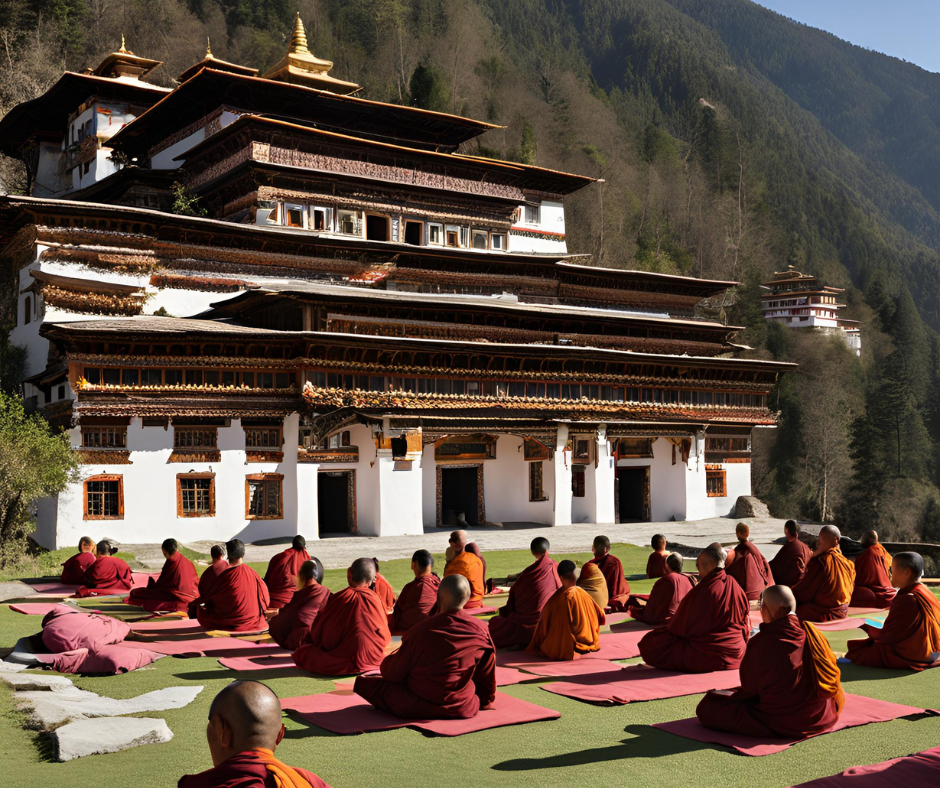

What to Expect from Our Bhutan Trekking and Yoga Retreat
Our Yoga and Trekking Retreat in Bhutan is designed for adventurous people seeking physical challenges and spiritual growth. Here’s a snapshot of what you can expect:
- Start in Paro: We begin in the picturesque town of Paro, where you’ll have time to acclimatize, explore temples, and prepare for the adventure ahead.
- Trek to Tiger’s Nest: We’ll hike to the iconic Tiger’s Nest Monastery, a highlight of the retreat and one of the most awe-inspiring experiences in Bhutan.
- Dagala Thousand Lakes Trek: This 5-day trek through the breathtaking Himalayas offers physical challenges and moments of serenity as we journey through alpine lakes and valleys.
- Daily Yoga and Meditation: Each day of the retreat includes yoga sessions designed to complement our trekking and meditation in sacred spaces like monasteries.
- Cultural Exploration: Along the way, we’ll visit local villages, learn about Bhutan’s deep-rooted Buddhist traditions, and experience the authentic Bhutanese way of life.
- End in Thimphu: Our retreat concludes in Bhutan’s capital city, Thimphu, where you can relax, explore, and reflect on the journey.
Why Travel to Bhutan with Us?
Our small and intimate retreat group ensures personalized attention and a deeper connection with your surroundings.
By joining our retreat, you’ll also have access to knowledgeable local guides who will provide insight into Bhutan’s history, culture, and traditions, making your experience even more decadent.
Ready to Embark on the Journey of a Lifetime?
If you’re looking for a retreat that combines adventure, mindfulness, and cultural immersion, Bhutan is calling you. Our April 18-25, 2025, Yoga and Trekking Retreat is open for bookings, but spots are limited.
Don’t miss this once-in-a-lifetime opportunity to explore one of the world’s most magical destinations.
Sign up now to reserve your spot!
Spain is a perennial favorite among yoga retreat participants and holidaymakers for a multitude of reasons, each contributing to its enduring popularity as a top travel destination.
And here is why:
Stunning Landscapes:
Spain's landscapes and natural beauty are as diverse as they are breathtaking, offering a wide array of experiences for nature lovers and outdoor enthusiasts alike. From pristine beaches along the Mediterranean coast to rugged mountains and lush forests, Spain's scenery is nothing short of spectacular.
Beaches:
Spain is famous for its stunning coastline, which stretches for thousands of kilometers along the Mediterranean Sea, the Atlantic Ocean, and the Bay of Biscay. From the vibrant beaches of the Costa del Sol to the secluded coves of the Balearic Islands, Spain offers something for everyone. Whether you're looking to soak up the sun, swim in crystal-clear waters, or enjoy water sports such as surfing and snorkeling, Spain's beaches are the perfect destination.
Mountains:
Spain is famous for its stunning coastline, which stretches for thousands of kilometers along the Mediterranean Sea, the Atlantic Ocean, and the Bay of Biscay. From the vibrant beaches of the Costa del Sol to the secluded coves of the Balearic Islands, Spain offers something for everyone. Whether you're looking to soak up the sun, swim in crystal-clear waters, or enjoy water sports such as surfing and snorkeling, Spain's beaches are the perfect destination.
National Parks:
Spain is home to several stunning national parks and protected areas that showcase the country's diverse flora and fauna. The Picos de Europa National Park in northern Spain is known for its dramatic limestone peaks, deep gorges, and lush forests, while the Doñana National Park in Andalucia is a UNESCO World Heritage Site renowned for its wetlands and birdwatching opportunities. Other notable parks include the Sierra de Grazalema Natural Park, the Tablas de Daimiel National Park, and the Caldera de Taburiente National Park in the Canary Islands.
Nature Reserves:
Beyond its national parks, Spain is dotted with nature reserves and protected areas that preserve its natural beauty and biodiversity. The Cabo de Gata-Níjar Natural Park in Andalucia is one such example, boasting rugged coastal cliffs, hidden beaches, and volcanic rock formations. The Ordesa y Monte Perdido National Park in the Pyrenees is another gem, offering pristine wilderness, alpine meadows, and stunning waterfalls.
Climate:
With its Mediterranean climate, Spain enjoys mild winters and long, sunny summers, making it an ideal destination for sun-seekers year-round. Whether you're lounging on the beaches of the Balearic Islands or exploring the historic streets of Barcelona, you're sure to enjoy the pleasant weather that Spain has to offer.
Hiking The Thrilling Caminito del Ray
One of the highlights of our retreat was the opportunity to explore the rugged beauty of the Caminito Del Ray trail. Led by experienced guides, we embarked on a journey of discovery, navigating cliffs and winding pathways with awe and reverence.
Nestled amidst the rugged landscapes of Andalucia, Spain, lies one of the world's most exhilarating hiking trails: the Caminito del Rey. This awe-inspiring pathway winds its way through the breathtaking El Chorro Gorge, offering intrepid adventurers a once-in-a-lifetime opportunity to experience the raw beauty of nature from dizzying heights.
Originally built in the early 20th century to provide maintenance access for workers at nearby hydroelectric plants, the Caminito del Rey gained notoriety for its perilous conditions and hair-raising reputation. For decades, the trail fell into disrepair, earning it the nickname "the world's most dangerous walkway" and attracting thrill-seekers from around the globe eager to test their mettle.

In recent years, efforts have been made to restore and renovate the Caminito del Rey, transforming it from a perilous pathway into a safe and accessible hiking trail. Today, visitors can embark on a guided journey along the trail, marveling at the stunning vistas and vertigo-inducing views that have made the Caminito del Rey a bucket-list destination for adventurers everywhere.
The journey along the Caminito del Rey begins with a scenic walkway suspended high above the rushing waters of the Guadalhorce River. As hikers traverse the narrow pathway carved into the sheer cliffs of the gorge, they are treated to panoramic views of the surrounding countryside, with glimpses of soaring eagles and cascading waterfalls adding to the sense of wonder and excitement.
The Caminito del Rey offers an unforgettable adventure that will be remembered for a lifetime. Whether you're a seasoned hiker seeking a new challenge or a nature enthusiast eager to experience the wonders of Andalucia's rugged landscapes, the Caminito del Rey is sure to leave you breathless in more ways than one.
Yoga Retreat Center
Our Yoga retreat center is located 3 km from the charming village of El Gastor.



The accommodations are rooms in villas with views of the mountain, air conditioners, and heaters and there is wifi inside all the buildings. Villas have a bedroom with a double bed, a living room with a fold-out sofa, an open kitchen, a bathroom, a balcony, and a pool. The 19 rooms can be single, double, triple, or quadruple occupancy and have air conditioning, heaters, and free wifi.
We have at our disposal a comfortable yoga studio with all the necessary equipment such as yoga mats, blocks, blankets, and bolsters.



Enjoying Nourishing Vegetarian Delights
At our yoga retreat, we believe that nourishing the body with wholesome, vegetarian food is an essential part of the holistic experience. Inspired by the bounty of Andalucia's fertile lands and the rich tradition of Mediterranean cuisine, our meals are crafted with care using locally sourced ingredients, ensuring that each bite is a celebration of flavor, freshness, and vitality.
Drawing upon the abundance of local produce, our menu showcases the vibrant flavors and vibrant colors of Andalucia's culinary heritage. From the rich, golden hues of locally produced olive oil to the earthy sweetness of ripe tomatoes and peppers, each ingredient is carefully selected to create dishes that delight the senses and nourish the soul.
Our meals are designed to provide a balance of nutrients and flavors, offering a variety of plant-based proteins, whole grains, and fresh vegetables to fuel your body and support your practice. Whether you're indulging in a hearty bowl of lentil soup, savoring a colorful salad bursting with seasonal vegetables, or enjoying a comforting plate of vegetable paella, our menu is sure to satisfy even the most discerning palate.
Our vegetarian menu is not only delicious—it's also designed to inspire and empower you to make healthier choices long after you leave our retreat. By showcasing the incredible diversity and versatility of plant-based ingredients, we hope to ignite a passion for cooking and eating well that will continue to nourish your body, mind, and spirit for years to come.
Improve and deepen your yoga practice!
With multiple sessions each day, you have the opportunity to practice yoga more extensively than you might in your routine. This extended practice can help you refine your poses, build strength and flexibility, and deepen your understanding of yoga techniques. The expertise of an experienced yoga teacher can help you refine your alignment, explore advanced practices, and overcome any challenges you may encounter.
Retreats often incorporate workshops or discussions on yoga philosophy, history, and spirituality. This exploration can deepen your understanding of the philosophical principles underlying yoga and inspire you to integrate these teachings into your practice and daily life.
You can try and practice different styles of yoga.
Practicing and learning different styles of yoga can greatly benefit you in finding the right practice for different days or stages of life in the future in several ways:
- Understanding Your Preferences: Trying out various yoga styles allows you to understand what resonates most with you. You might find that you prefer the dynamic flow of Vinyasa one day, while on another day, you crave the grounding stillness of Yin yoga. This understanding helps you choose the most suitable practice for your current needs.
- Adaptability: Life is dynamic, and your needs and energy levels can vary from day to day. Learning different styles of yoga equips you with a range of techniques and practices that you can adapt to suit your mood, energy level, or specific circumstances. For example, if you're feeling stressed, you might opt for a calming practice like Restorative yoga, whereas if you need an energy boost, you might choose a vigorous Ashtanga practice.
- Targeted Benefits: Each yoga style offers unique benefits for the body, mind, and spirit. By exploring different styles, you can identify which practices address specific needs or goals. For instance, if you're recovering from an injury, you might focus on gentle, therapeutic styles like Iyengar yoga. If you're seeking spiritual growth, you might gravitate towards practices that incorporate meditation and breathwork, such as Kundalini yoga.
- Holistic Approach: Combining different yoga styles allows for a more holistic approach to your practice. You can integrate elements of strength-building, flexibility, mindfulness, relaxation, and breathwork into your routine, ensuring that you address all aspects of your well-being.
- Preventing Plateaus: Practicing the same style of yoga exclusively can sometimes lead to plateaus in your practice or personal growth. Exploring different styles challenges your body and mind in new ways, preventing stagnation and facilitating continuous growth and evolution.
- Life Transitions: As you navigate different life stages or transitions, your yoga needs may evolve. For example, during periods of high stress, you might prioritize practices that promote relaxation and stress relief, while during times of change or uncertainty, you might seek grounding and stability through your yoga practice. Having familiarity with various styles allows you to adapt your practice to support you through different life circumstances.
Pilates helps Yogis engage their core!
Yoga and Pilates don’t have to be two separate practices. They can work together hand by hand, to help strengthen your core, lengthen your side body, avoid injury, and improve your alignment. Pilates’s focus on building and engaging a strong core can propel one's yoga practice into new realms.
Pilates is a comprehensive form of exercise that can help you become stronger by targeting core muscles, improving muscle endurance, enhancing flexibility, promoting good posture, and supporting overall functional strength and mobility.
Pilates is known as a "workout," and yoga as a "practice"; however, the irony here is that, to improve at anything, we have to practice, and when we practice well both Pilates and yoga can be exceptional workouts.
Our retreat Pilates teacher is Kaia Heinleht from Estonia.
More information about her in the Estonian language is here.
Kaia is one of the backbones, and foundations of Estonian Pilates, having been introduced, practiced, and taught Pilates for over twenty years. During all these years, she has consistently developed her skills at various international training under-recognized Pilates master teachers such as Kelly McKinnon, Debora Lessen, and Amy Taylor Alpers. The last training was the Kathy Corey Postgraduate Mentor Program in Germany in 2018.



In addition to Pilates, in recent years Kaia has been improving herself in the field of osteopathy, and in 2015 she started studying kinesiology TFH (Touch For Health). Relying on her acquired knowledge and practice of thousands of hours in the fields listed above, Kaia has developed her physical education training course. Physiotherapists and rehabilitation specialists working in the Estonian medical system have improved their knowledge under his guidance.
Our retreat Yoga teacher and hiking guide is Pille Mitt.
Read more about Pille here.
You can book your next yoga & hiking retreat in Spain here.
The mother-daughter relationship is one of the most complex and profound connections in human existence. As adult daughters navigate the challenges of life, the bond with their mothers takes on new dimensions, requiring a delicate balance of independence and closeness. In the pursuit of fostering a healthy connection, unconventional approaches, such as yoga and hiking retreats, can provide a unique and transformative space for quality time and personal growth.



The Dynamics of Mothers-Adult Daughters Relationships:
The dynamics between mothers and adult daughters can be intricate, influenced by a lifetime of shared experiences, evolving roles, and individual growth. As daughters enter adulthood, the relationship often shifts from a more parent-child dynamic to a friendship grounded in mutual respect and understanding. However, this transition isn't always seamless, and maintaining a healthy connection requires effort from both parties.
Mothers and Adult Daughters Quality Time: A Catalyst for Connection:
Finding quality time for meaningful interactions can be challenging in our fast-paced world. This is where the idea of a yoga and hiking retreat comes into play. These retreats offer a purposeful escape from the demands of daily life, creating a serene environment conducive to self-reflection and strengthened connections.
Yoga for Mind-Body Harmony:
Yoga is not just a physical exercise but a holistic practice promoting mental and emotional well-being. Participating in yoga sessions can provide mothers and daughters with a shared experience, fostering a sense of unity. Practicing mindfulness and deep breathing can open communication channels, creating a space for vulnerability and understanding.
Hiking for Shared Adventure:
Embarking on a hiking and yoga retreat introduces an element of shared adventure and challenges that can strengthen the bond between mothers and adult daughters. Physical activity not only promotes health but also encourages teamwork and mutual support. Overcoming obstacles together on the trail can be a metaphor for navigating life's challenges side by side.
The Healing Power of Nature:
A yoga and hiking retreat surrounded by the beauty of nature provides an ideal setting for healing and rejuvenation. Away from the distractions of daily life, mothers and daughters can reconnect with themselves and each other. The serene backdrop becomes a canvas for shared memories, fostering a deeper understanding of each other's perspectives.
Reflection and Communication:
Retreats offer a unique opportunity for reflection and open communication. Mother and daughter can engage in meaningful conversations about their journeys, aspirations, and challenges. The retreat becomes a safe space for honest and authentic dialogue, strengthening their emotional bond.
Deepening Connections Through Shared Learning:
A yoga and hiking retreat focuses on physical activities and provides opportunities for shared learning. Engaging in workshops or classes together, whether learning new yoga poses or gaining wilderness survival skills during hikes, can be an enriching experience. This shared acquisition of knowledge creates a sense of camaraderie, encouraging mutual growth and understanding.
Empowering Each Other:
One of the beautiful aspects of a yoga and hiking retreat is the encouragement to step out of your comfort zone. Mothers and daughters can find themselves in unfamiliar situations, facing physical challenges or exploring aspects of their personalities previously untapped. This shared journey of self-discovery and empowerment can bring about a newfound appreciation for each other's strengths and vulnerabilities.
Digital Detox for Authentic Connection:
In the age of constant connectivity, a retreat provides a rare opportunity for a digital detox. Away from the screens and distractions, mothers and daughters can immerse themselves in the present moment, fostering authentic connections. Unplugging from the virtual world allows for deeper conversations, enhanced emotional bonding, and a more profound shared experience.
Creating Lasting Memories:
The retreat becomes a canvas for creating lasting memories. Whether it's the breathtaking sunrise during a morning yoga session or the sense of accomplishment after completing a challenging hike, these shared moments become touchstones in the mother-daughter relationship. The memories forged in the retreat environment can serve as a source of strength and nostalgia, reinforcing their unique bond.
Practicing Gratitude:
A key element of many yoga retreats is the practice of gratitude. Taking time each day to reflect on the positive aspects of life can shift perspectives and create a more positive atmosphere. Encouraging mothers and daughters to express gratitude towards each other during the retreat fosters a sense of appreciation and acknowledgment, strengthening the foundation of their relationship.
Sustaining the Connection Beyond the Retreat:
The impact of a yoga and hiking retreat doesn't end when the journey concludes. Encouraging mothers and daughters to integrate the lessons learned into their daily lives ensures that the positive changes experienced during the retreat become lasting. Implementing mindfulness practices, engaging in physical activities, and maintaining open communication are ways to sustain the strengthened connection long after the retreat.
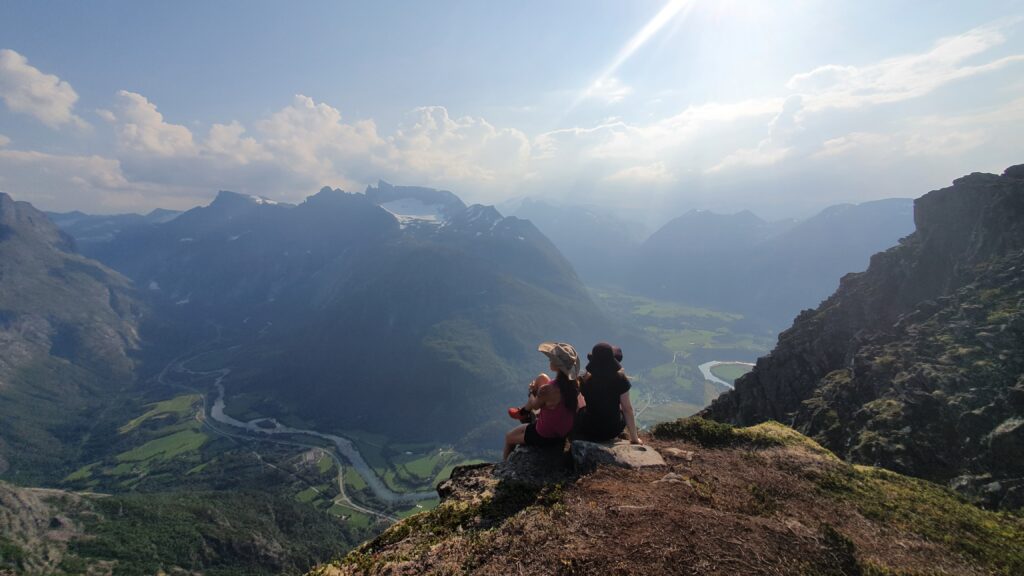
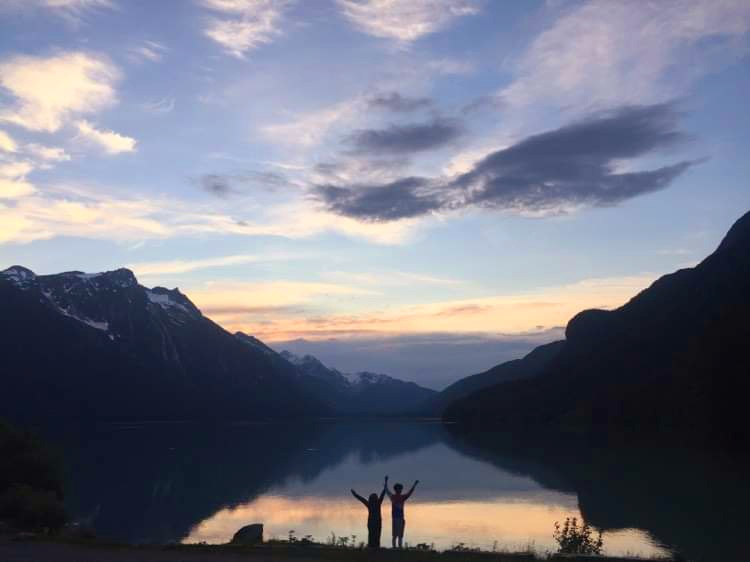

Conclusion:
The importance of quality time cannot be overstated in the pursuit of a healthy mother-adult-daughter relationship. The yoga and hiking retreat serves as a transformative experience, blending physical activity, mindfulness, and the beauty of nature to create an environment conducive to personal growth and strengthened connections. By embracing these unconventional approaches, mothers and daughters can embark on a journey of self-discovery and shared experiences, fostering a bond that withstands the test of time.
Discover our selection of yoga and hiking retreats here.
Read a blog post, "What is yoga retreat..." here.
With its breathtaking landscapes, pristine nature, and tranquil ambiance, Norway offers the perfect backdrop for a rejuvenating hiking and yoga holiday. Imagine yourself amidst towering mountains, crystal-clear fjords, and lush greenery, finding inner peace through yoga practice while exploring some of the world's most picturesque trails. This guide will examine the benefits of combining yoga and hiking, essential equipment for your retreat, and the best hikes in the Møre of Romsdal region and Molde.


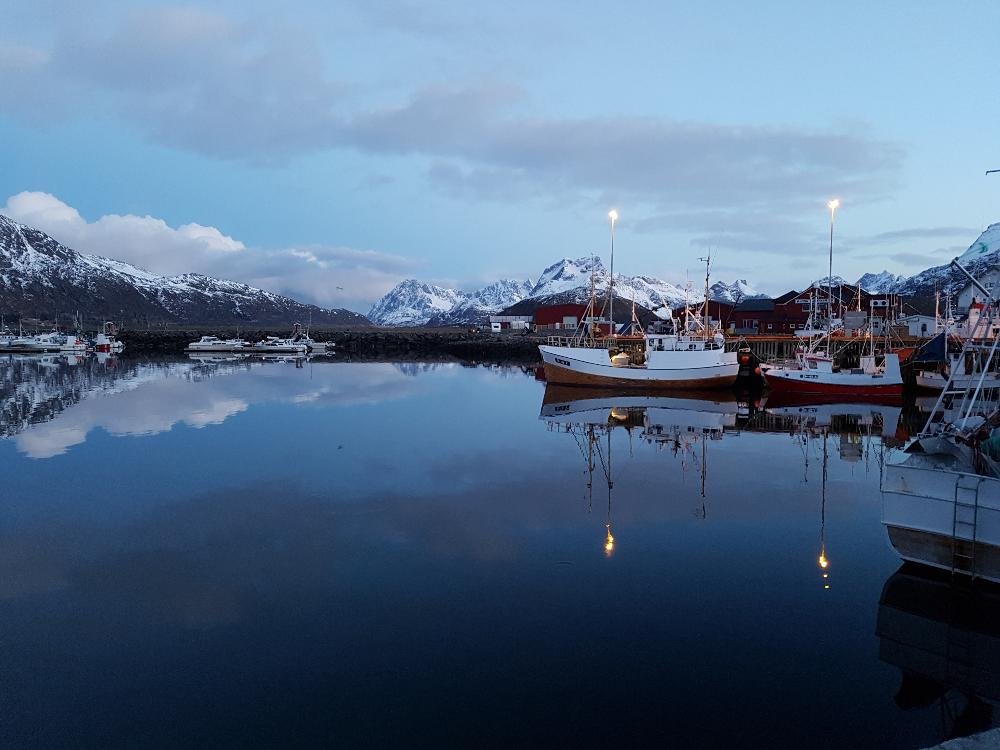



The Benefits of Combining Yoga and Hiking:
Physical Health:
Hiking provides an excellent cardiovascular workout, strengthening your heart, muscles, and bones. The varied terrain of Norway's trails offers opportunities for both moderate and challenging hikes, catering to all fitness levels. Incorporating yoga into your hiking routine enhances flexibility, balance, and posture, reducing the risk of injuries and ensuring a more comfortable hiking experience.
Mental Well-being:
Immersing yourself in nature has profound effects on mental health, reducing stress, anxiety, and depression. Yoga amplifies these benefits by promoting mindfulness, relaxation, and emotional resilience. Combining hiking and yoga allows you to reconnect with yourself and the natural world, fostering a sense of inner peace and tranquility.
Spiritual Connection:
Yoga is a physical exercise and a spiritual journey towards self-discovery and enlightenment. Practicing yoga amidst Norway's awe-inspiring landscapes will deepen your connection to nature and tap into a profound sense of harmony and unity. The symbiotic relationship between yoga and hiking encourages introspection, mindfulness, and a deeper appreciation for the beauty of the present moment.
Essential Equipment for a Yoga and Hiking Retreat in Norway:
Comfortable Hiking Gear:
Invest in sturdy hiking boots with good ankle support to safely navigate Norway's rugged terrain. Pack lightweight, moisture-wicking clothing suitable for layering, as weather conditions can change rapidly. Don't forget to bring a waterproof jacket, hat, gloves, and sunglasses to protect yourself from the elements. Read the longer article "7 Best Tips on what to wear when hiking in Norway" here.

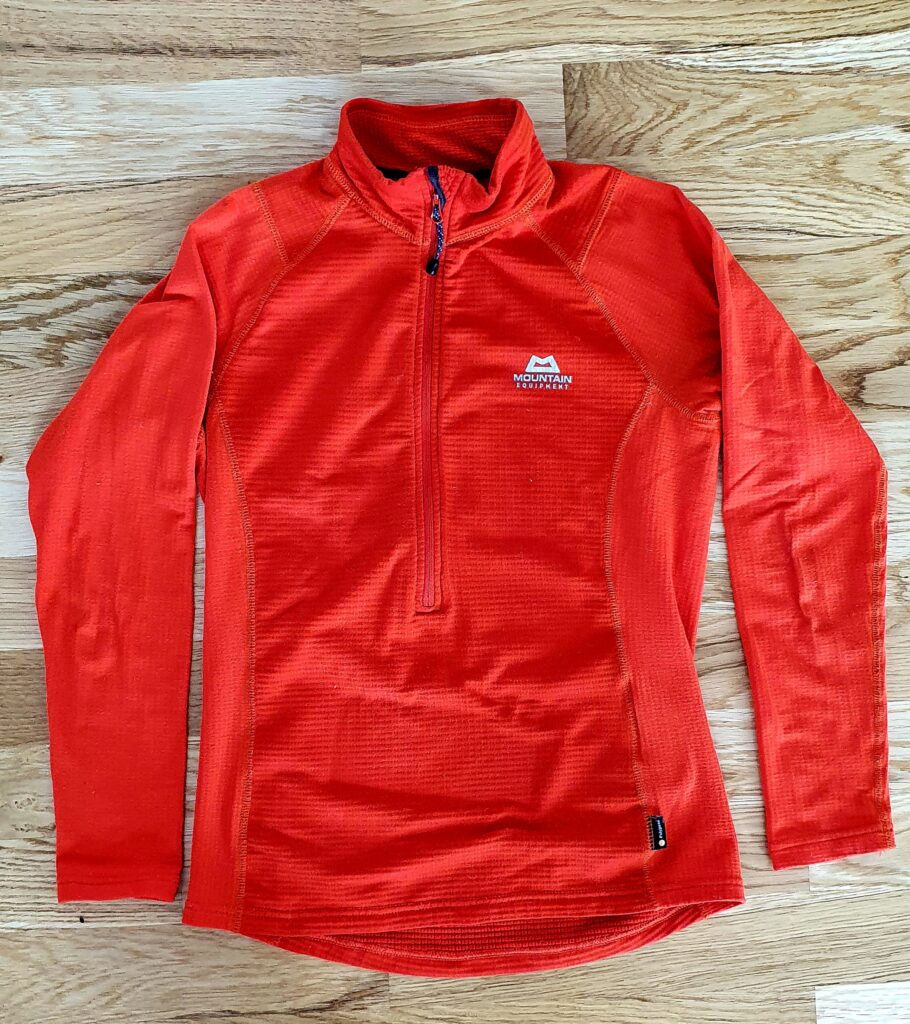
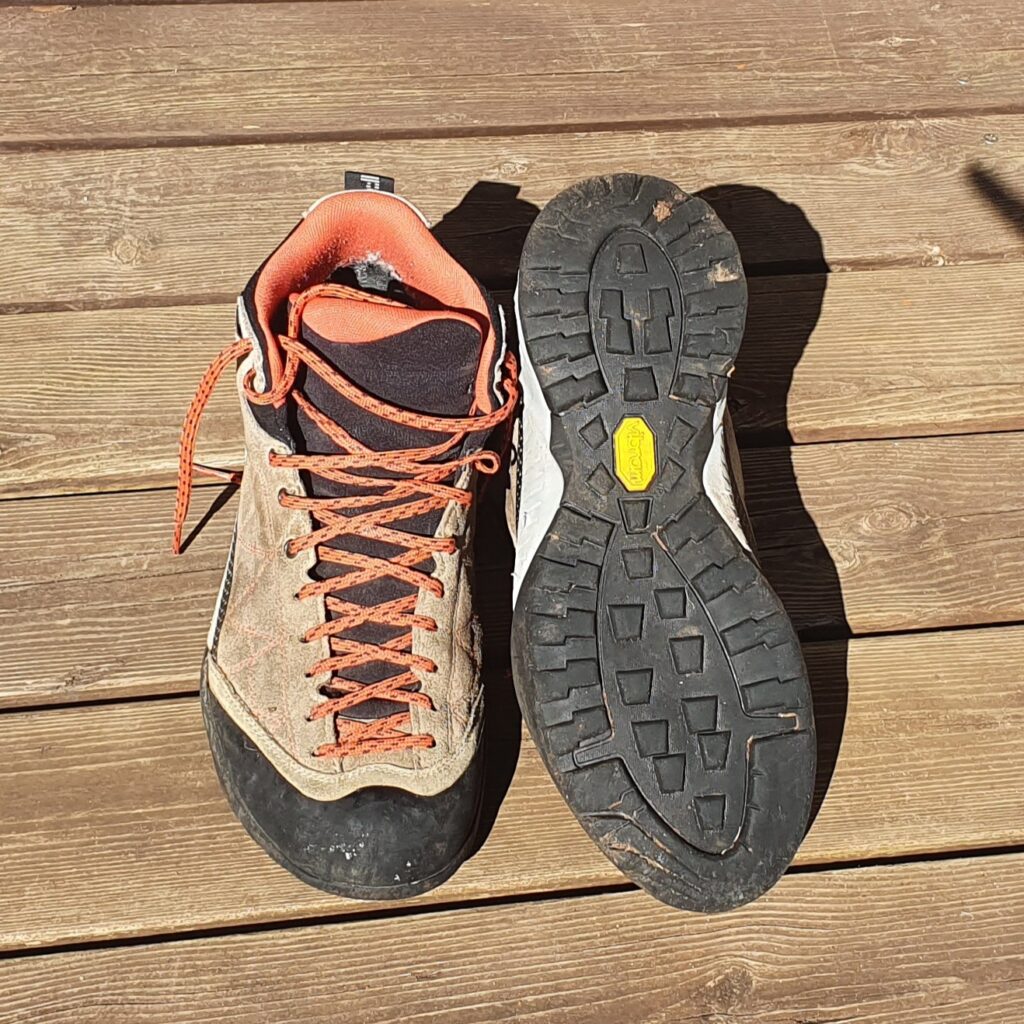



Yoga Essentials:
Carry a durable, lightweight yoga mat for your practice outdoors. Opt for quick-drying materials that can withstand varying terrain. Pack comfortable yoga attire, a reusable water bottle, sunscreen, and insect repellent. Consider bringing a meditation cushion or blanket for comfort during meditation sessions amidst nature.

Safety Gear:
Prioritize safety by carrying a first aid kit, emergency whistle, navigation tools (such as a map and compass or GPS device), and sufficient food and water for your hike. It's also essential to inform someone of your hiking plans and expected return time, especially if you're venturing into remote areas with limited cell reception.
The Best Hiking Areas in Norway:
Molde and Møre of Romsdal Area
Nestled along the stunning Norwegian coastline, Molde and the Møre of Romsdal region boast abundant hiking trails amidst breathtaking scenery. From coastal paths overlooking the majestic fjords to mountainous terrain offering panoramic views, this area offers something for every hiker.
Romsdalseggen Ridge
Embark on an unforgettable journey along the iconic Romsdalseggen Ridge, known for its dramatic peaks, deep valleys, and exhilarating views. This challenging hike spans approximately 10 kilometers and traverses rugged terrain and steep ascents. However, the breathtaking vistas of the Romsdal Alps, fjords, and lush valleys make it well worth the effort.
Trollstigen
For a more leisurely hike with unparalleled beauty, explore the Trollstigen area, famous for its winding mountain roads and cascading waterfalls. Hike along well-marked trails leading to viewpoints overlooking the picturesque Stigfossen waterfall and the awe-inspiring Trollveggen (Troll Wall), Europe's tallest vertical rock face.
Molde Panorama
Experience Molde's enchanting coastal landscape by embarking on the Molde Panorama hike. This gentle hike, which meanders through lush forests, tranquil lakes, and charming villages, is suitable for all skill levels and offers panoramic views of the city, fjords, and surrounding islands.
Troll Church
Embark on a thrilling 3-4 km hike to Troll Church, where you'll discover three captivating limestone and marble grottos adorned with underground streams and a majestic waterfall. Beyond the uppermost grotto lies a serene lake bordered by white marble "jetties," offering a tranquil retreat amidst the rugged terrain.
Litlefjellet
Litlefjellet is a light version of the Rommsdalseggen hike. This is a hike you can do with your whole family. Even younger children from 3-4 years can hike up to this mountain. Make sure you have plenty of time to enjoy the view, picnic, and meditate on the top.
Lofoten Islands
Embark on a journey through the rugged beauty of Lofoten, Norway, where dramatic mountains meet the sea in a breathtaking display of natural splendor. Hiking in Lofoten offers many trails, from gentle coastal walks to challenging mountain ascents. Explore pristine beaches, picturesque fishing villages, and awe-inspiring vistas around every corner. Whether you're scaling the peaks of Reinebringen for panoramic views or strolling along the white sandy shores of Haukland Beach, Lofoten's hiking trails promise unforgettable adventures amidst some of the most stunning scenery in the world.
Telemark
Hagabrekka Wonderland is a sustainable learning center created to explore different practices for regenerative living, recreational activities in nature, permaculture, and yoga. This is what they say:
"We have a holistic approach towards sustainability, perceiving it as a lifestyle and a belief system integrating all aspects of life. We are completely off the grid, growing parts of our food, foraging wild herbs in the nature around us, and using permaculture principles to create a little paradise. This is a continuous learning and growing journey for us and our visitors. We encourage everyone who visits us to disconnect from the screen, let go of the stress of daily life, and reconnect to nature, a simple lifestyle enjoying the present moment, and healthy, sustainable living."
Book your stay or join a yoga retreat: www.wanderlustyoga.no
Innlandet
Nøsen Yoga Retreat is a high-mountain lodge surrounded by pristine lakes, meadows, and waterfalls. The region offers exciting opportunities for both adults and children all year round. Around Nøsen, several mountain tops reach 1700 meters above sea level, and there are great opportunities for skiing, cycling, paddling, and fishing. The hotel has a rich history, receiving its first guests as far back as 1888.
Alexander Medin took over the management of the hotel in 2015 with a dream of turning it into Norway's (and Europe's) premier Yoga retreat destination. He has driven initiatives such as Gangsteryoga, a project to bring yoga to inmates in prison, and Back in the Ring, leveraging yoga as a practice to fight drug addiction. Together with participants in the "Back in the Ring" project, he has restructured the hotel and created a place for everyone and anyone to come and strengthen their body, mind, and soul, relax their shoulders, take in nature, and practice yoga in a warm and generous environment.
Rogaland
Explore the breathtaking landscapes of Rogaland, Norway, through various exhilarating hikes. This region offers something for every adventurer, from the iconic peaks of Preikestolen and Kjerag to the serene beauty of Lysefjorden. Traverse rugged terrain, winding trails, and towering cliffs as you immerse yourself in the stunning scenery of fjords, mountains, and lush valleys. Whether you're seeking a challenging trek or a stroll, Rogaland's diverse hiking trails promise an unforgettable experience amidst the wonders of nature.
In conclusion, a hiking and yoga holiday in Norway offers a unique opportunity to nourish your body, mind, and soul amidst some of the world's most breathtaking scenery. Whether you seek physical challenge, spiritual renewal, or a deeper connection with nature, Norway's diverse landscapes and tranquil ambiance provide the perfect setting for an unforgettable retreat. So pack your bags, lace up your boots, and embark on a transformative journey of self-discovery in the heart of Scandinavia.
This was more than just a yoga retreat, it was an active adventure with volcano hiking, baby sea turtles, and ancient Mayan culture.



With all the stresses of daily life adding up, it’s no surprise that more and more people are looking to stay at a yoga retreat on their travels. Yoga retreats are not just about improving fitness and strength, but about calming your mind and connecting you to your spiritual self.
Guatemala is known as the Land of Eternal Spring, for its active volcanoes, rainforests, ancient Mayan sites, Spanish colonial towns, and the iconic Lake Atitlan surrounded by gorgeous nature spots. With all this nature, you’ll be nestled in a landscape that exhales calmness and tranquility.
Imagine a deep, cobalt lake surrounded by dozens of tiny villages and looming volcanoes. That is Lake Atitlan in Guatemala. Its shores have been attracting hippies and hedonistic travelers for decades.
It is no secret that Guatemala grows some of the best coffee in the world. If you know a little about coffee, then you know that the best coffee grows at higher elevations.
Antigua Guatemala is known as the best-preserved Spanish colonial city in Central America. Stroll the cobblestone streets, lounge with the locals in Central Park on sunny afternoons, or hike up one of the volcanoes overlooking the city for amazing views. Antigua used to be the capital of Guatemala until a damaging earthquake caused a switch to Guatemala City. As harrowing as the earthquake must have been at that time, some of the remains of Antigua’s stunning colonial buildings still stand today.
In November 2023, I had the pleasure of organizing and leading a yoga retreat in Guatemala, accompanied by an eclectic group of eleven individuals hailing from Norway, Estonia, Canada, Austria, the UK, the USA, and Hungary. Our adventure began with some of us arriving in Guatemala City before the retreat officially commenced. Despite a minor setback with one member missing her initial flight from Amsterdam, we eventually all convened, eager to start our journey.
Exploring Flores Island and the ancient Mayan ruins in Tikal
Our first stop was Flores, a charming town serving as a gateway to the ancient Maya ruins of Tikal. Tikal, nestled within a dense rainforest, welcomed us with towering pyramids, intricately carved stone structures, and sprawling plazas.


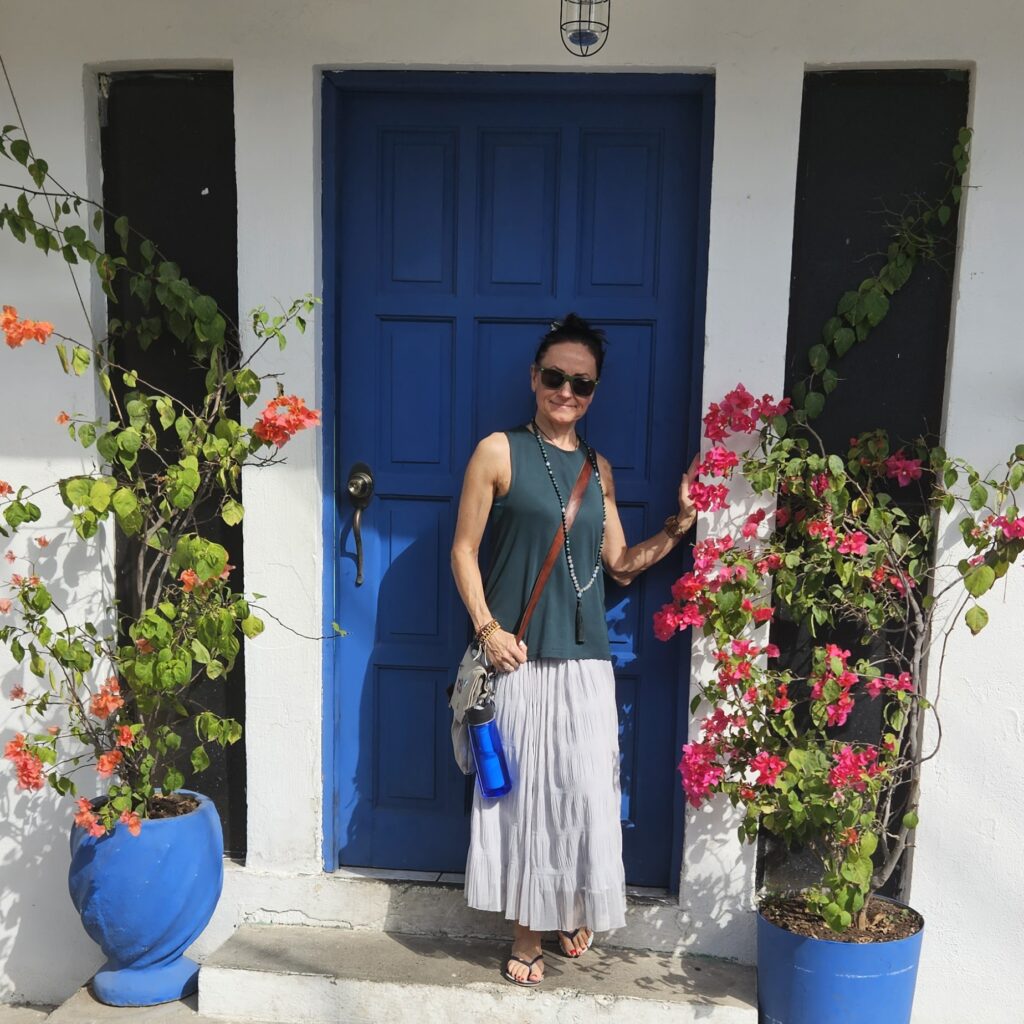
Tikal is the ruin of the ancient city, found in a rainforest in Guatemala. It is one of the largest archeological sites and urban centers of the pre-Columbian Maya civilization. It is located in the archeological region of the Peten, Tikal National Park, and in 1979 it was declared a UNESCO World Heritage Site. We stayed in Flores for 3 nights and took 2 trips to Tikal. Flores Island in Guatemala is located in Peten, one hour south of Tikal. It is surrounded by the third biggest lake in Guatemala, Lake Peten Itza.



The picturesque town of Flores Guatemala offers you the chance to enjoy stunning landscapes and cultural activities, plus, it is the gateway to most of the archaeological Mayan parks around the area. This quiet Island is one of the 25 most colorful places in the world. It hosts a big concentration of restaurants, cafés, and pubs to keep you busy during your stay. Flores is the perfect place to relax for a couple of days, combining it with awesome things to do like exciting excursions to the Crib of the Mayas, one of the biggest civilizations in the history of the world.
We embarked on a local flight back to Guatemala City to meet the group.
Immersing Ourselves in Antigua's Culture and History
Our next destination was Antigua, a city renowned for its colonial architecture and vibrant culture. Arriving during the Flowers Festival, we were greeted by streets adorned with colorful blooms. We spent the afternoon visiting the local artisan market and strolling through cobblestone streets, savoring the rich history of this charming city. Antigua used to be the capital of Guatemala until a damaging earthquake caused a switch to Guatemala City. As harrowing as the earthquake must have been at that time, some of the remains of Antigua’s stunning colonial buildings still stand today.



Challenging Ourselves with the Acatenango Vulcano overnight hike
The highlight of our journey, however, awaited us atop the Acatenango Volcano. Setting out early from Antigua, we embarked on a challenging overnight hike through diverse ecosystems, each offering its unique charm. From verdant forests teeming with wildlife to barren volcanic terrain, the ascent tested our physical endurance and mental fortitude. But reaching the campsite at 3600 meters was a moment of triumph, rewarded with sweeping views of the Antigua Valley and the fiery eruptions of nearby Volcan Fuego.


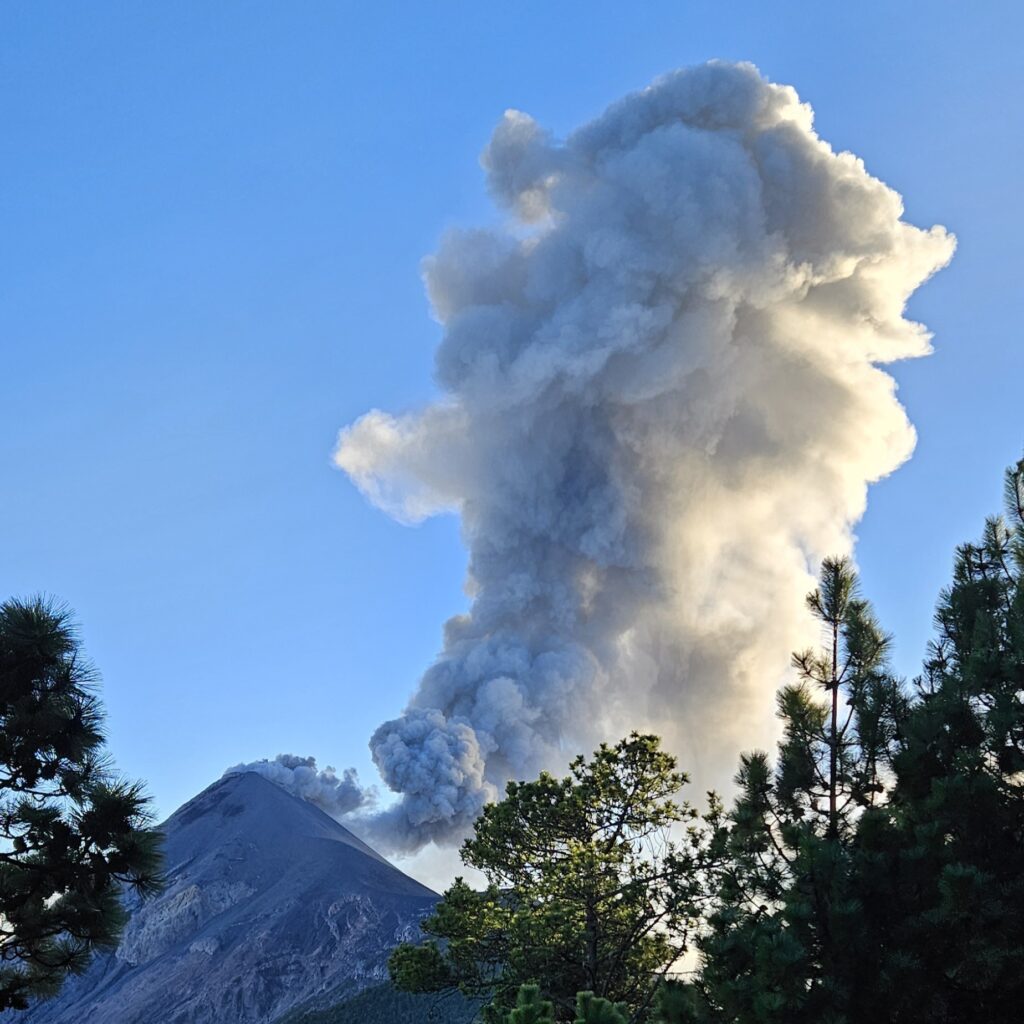






At dawn, we stood in awe atop Acatenango, witnessing a sunrise that painted the sky in hues of gold and pink. The panoramic views of Volcan Fuego, the Antigua Valley, and the distant Guatemalan highlands left us breathless, a testament to the raw beauty of nature. Descending back to Antigua, we savored a well-deserved rest, shower, and delicious dinner, reflecting on the challenges overcome and the bonds forged.
Rejuvenating with Yoga and Retreat Activities at Lake Atitlan
Our journey was far from over as we made our way to Eagles Nest by the shores of Lake Atitlan, a tranquil sanctuary nestled amidst verdant hills and azure waters. Here, we surrendered to the rhythm of yoga, ecstatic dance, and nourishing vegetarian cuisine, finding solace in the embrace of nature and community. Lake Atitlán sits at an altitude of just over 1550 meters above sea level. The surrounding Lake Atitlan is world-renowned for its Cacao and Coffee plantations.

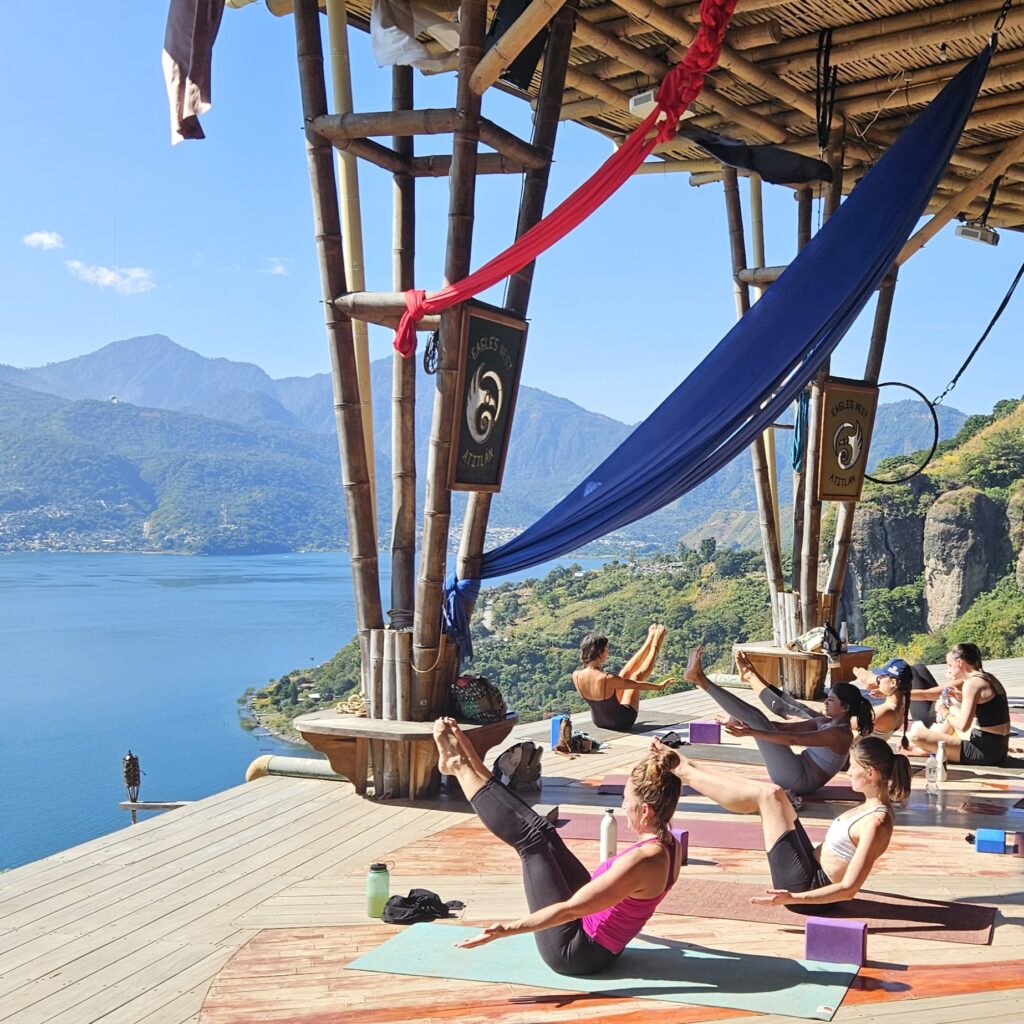

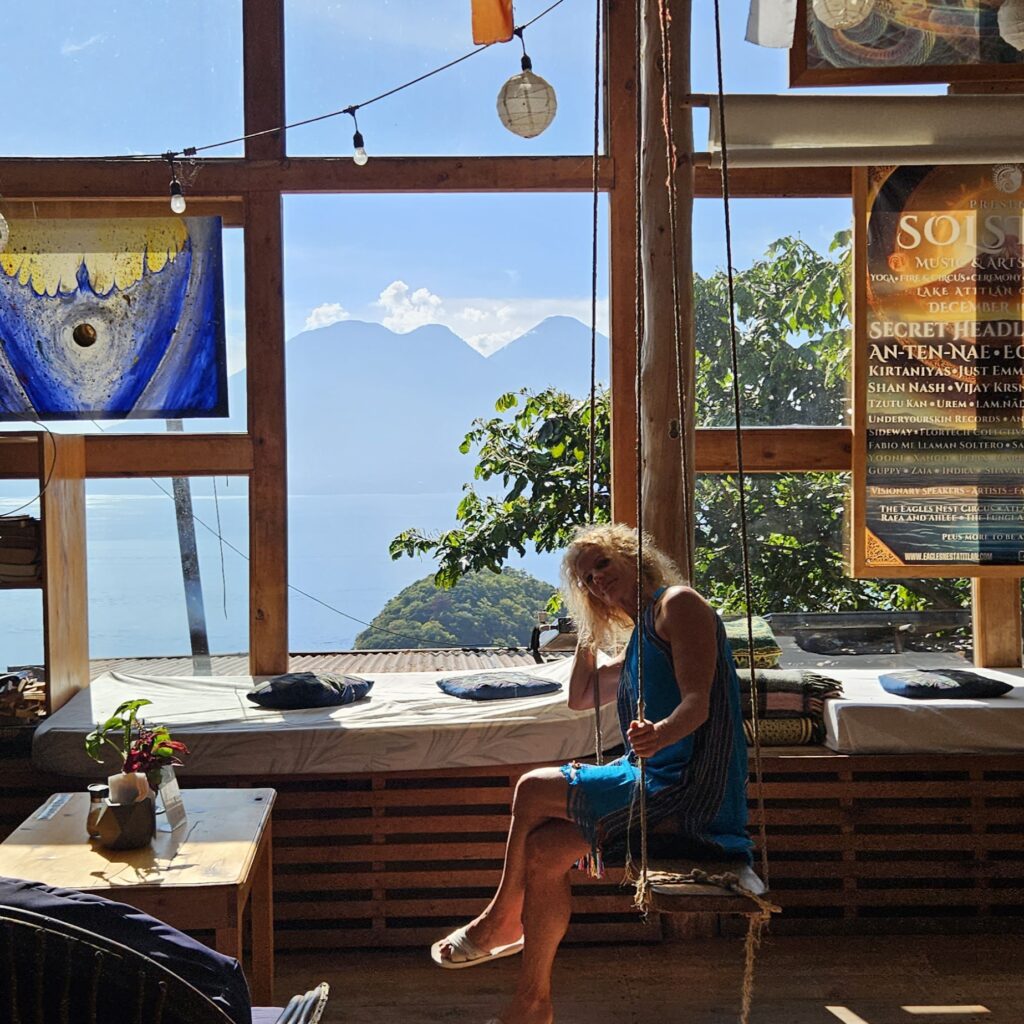


Arriving at Eagles Nest by Lake Atitlan was like coming to paradise. Eagle's Nest is an awe-inspiring ecological resort and world-class event venue for transformational growth and adventure travelers, artists, and digital nomads. There we indulged in yoga, ecstatic dance, and nourishing vegetarian cuisine. Each day began with yoga classes overlooking the tranquil waters of Lake Atitlan, where we were blessed to witness majestic flights of eagles soaring gracefully overhead, adding to the serenity of our practice. Afterward, we savored delicious meals, all while enjoying the breathtaking views that surrounded us, enhancing our moments of relaxation and introspection.
Mayan Cacao Ceremony
One of the most profound experiences during our retreat in Guatemala was the Sacred Mayan Cacao Ceremony, a spiritual ritual deeply rooted in ancient traditions. Guided by a local shaman, we gathered in a sacred circle around a fire, surrounded by the intoxicating aroma of freshly brewed cacao.
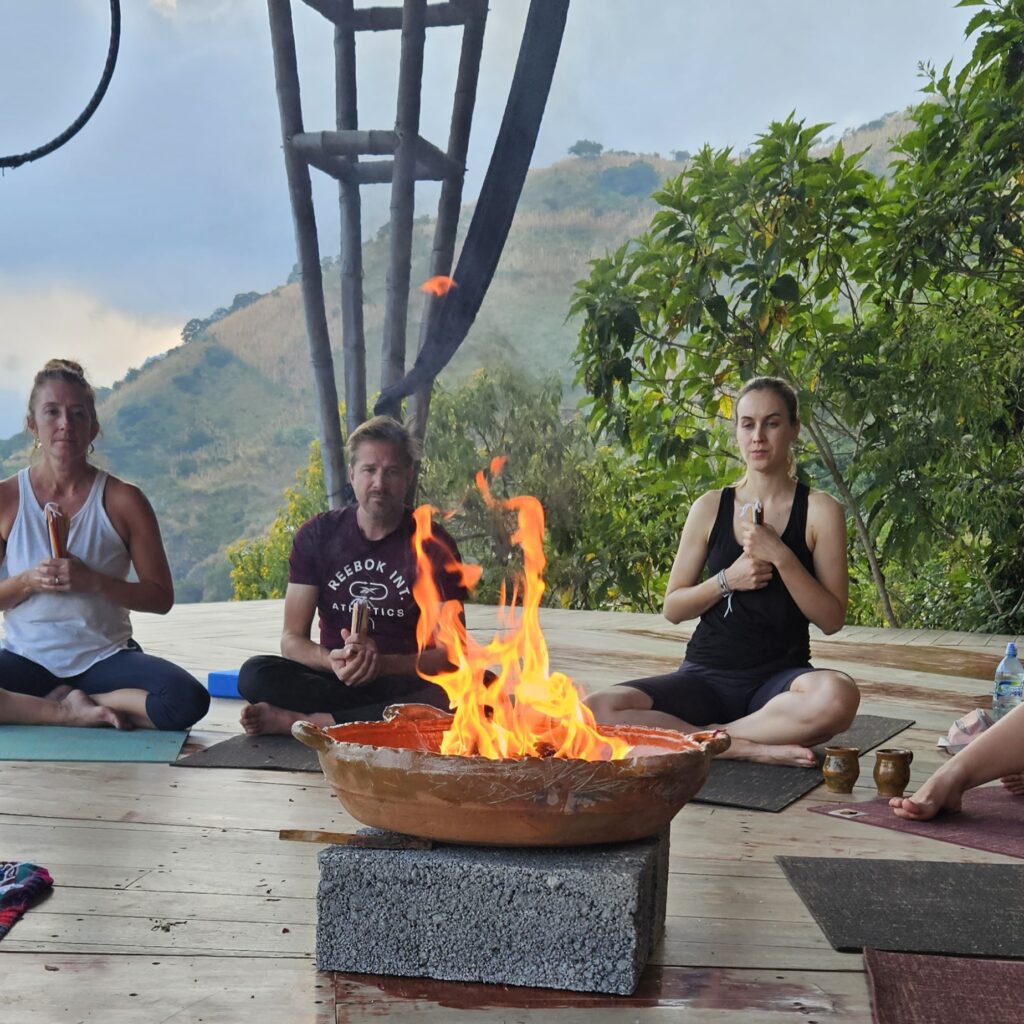


As the ceremony drew to a close, we emerged renewed and rejuvenated, our hearts overflowing with gratitude and love. The Sacred Mayan Cacao Ceremony touched us in ways we never imagined, leaving an indelible imprint on our souls and deepening our connection to ourselves, each other, and the world around us.
Waking to Tzununa and Waterfall Hike
Our exploration extended to the Tzununa permaculture farm, where we learned about fermentation at Love Probiotics. Sampling tangy sauerkrauts and fizzy kombuchas, we embraced the health benefits of probiotic foods and beverages.
Love Probiotics produce healthy, live, locally sourced, fermented probiotic foods and beverages (various types of raw sauerkrauts, raw vinegar, organic black, green, and white tea kombuchas, ginger beer, sparkling water kefirs, jun tea, organic kefir yogurt, Lacto-fermented hot sauce, super-food bliss balls, sourdough bread and more!), and they also offer a variety of hands-on fermentation workshops. After a long day of walking to Tzununa and hiking to the local waterfall, we took a boat back to San Marcos La Laguna, enjoying a relaxing 15-minute ride with picturesque views of the surrounding landscapes.
Witnessing the Spectacular Sunrise from Indian Nose
As our journey in Guatemala continued, we eagerly anticipated the sunrise hike to Indian Nose, also known as Mayan Nose or Face, a towering mountain perched on the northwest shore of Lake Atitlan. Setting out before dawn, our group embarked on the ascent of Indian Nose, guided by the local guide and the faint glow of the early morning sky. The path wound its way upwards, snaking through dense foliage and rocky outcrops, each step bringing us closer to the summit and the promise of an unforgettable sunrise.



After a brisk climb lasting approximately 30 to 45 minutes, we reached the summit of Indian Nose, greeted by panoramic views that stretched as far as the eye could see. Before us, a chain of volcanoes stood sentinel, their silhouettes etched against the canvas of the dawn sky. Below, the pristine waters of Lake Atitlan shimmered in the first light of day, casting a spellbinding glow upon the landscape.
Soaring Above Panajachel: Paragliding Adventure
Panajachel, affectionately known as Pana, served as the backdrop for one of the most exhilarating experiences of our journey – paragliding. Nestled on the shores of Lake Atitlan and surrounded by towering volcanoes, this vibrant town captivated us with its eclectic mix of culture, cuisine, and natural beauty.
With experienced instructors guiding us every step of the way, we soared high above Panajachel, the wind rushing past us as we marveled at the panoramic views below. From our vantage point in the sky, we were treated to a bird's-eye view of the San Pedro, Tolimán, and Atitlán volcanoes, their majestic peaks rising in the distance. Below, the shimmering waters of Lake Atitlan stretched out before us, framed by lush greenery and the bustling town of Panajachel.



For those with paragliding on their bucket list, Panajachel offered the perfect opportunity to fulfill their dreams, with experienced instructors providing a safe and thrilling experience. As we glided through the air, suspended between earth and sky, we felt a sense of freedom and exhilaration, unlike anything we had ever experienced before.
Pacific Coast - our yoga retreat's final destination
After bidding farewell to Lake Atitlan, we ventured to the Pacific coast, where we witnessed the release of baby sea turtles into the ocean. Amidst black sand beaches and crashing waves, we marveled at the wonders of nature, grateful for the opportunity to witness such a spectacle. Nestled in the laid-back village of El Paredon, with its spectacular black sand beach and crashing ocean waves, we savored our dinner together.



With hearts full and spirits uplifted, we bid farewell to the Pacific Coast, our souls enriched by the beauty of the natural world and the bonds of friendship that had blossomed during our time together.
Continuing the Adventure Beyond the Yoga Retreat: Hiking to Semuc Champey
Some of us chose to extend our stay to explore Semuc Champey, a natural wonder nestled in the Maya town of Languín. Despite the challenges of travel, the turquoise pools offered a serene sanctuary amidst the rugged terrain, a fitting end to our journey of exploration.
If you google Guatemala, Semuc Champey seems to be one of the most important places to visit and stay for several days. But the problem is how to get there. Whatever way you choose, it means at least 7-10 hrs of traveling in a bus along bumpy roads. That's why Semuc Champey gives me mixed feelings. We traveled there from Antigua, 9 hrs. It was one day on a bus.
Arriving at our destination, we found ourselves faced with the daunting task of traversing the final stretch of our journey. Determined to embrace the adventure, we opted to embark on a 12-kilometer walk from our hostel near Languín to Semuc Champey, immersing ourselves in the natural beauty of the Guatemalan countryside.
As we trekked through rolling hills and verdant valleys, we were greeted by the warm smiles of locals, their hospitality a testament to the enduring spirit of the region. Despite the cloud-covered sky, the cool breeze provided respite from the sweltering heat, allowing us to enjoy the journey without succumbing to exhaustion.



However, our romanticized vision of the trek was soon challenged by the harsh reality of roadworks and muddy terrain. With each step, the once picturesque path devolved into a treacherous mud hole, testing our resolve and leaving us longing for the tranquility of Semuc Champey's crystalline waters.
Upon reaching our destination, we were greeted by the mesmerizing sight of the turquoise pools, their beauty a stark contrast to the rugged landscape that had led us there. After a refreshing swim and a leisurely lunch, we reluctantly began our journey back, eager to escape the confines of the muddy trails and return to civilization.



As we made our way back to Guatemala City, we were reminded once again of the unpredictable nature of travel. Yet, amidst the chaos and confusion, we found moments of laughter and camaraderie, forging bonds that would endure long after our journey had come to an end. And so, as we bid farewell to Semuc Champey, we carried with us not only memories of its unparalleled beauty but also the lessons learned from our journey – a testament to the transformative power of travel and the resilience of the human spirit.
As we said our farewells to Guatemala, we carried with us memories of adventure, camaraderie, and self-discovery. Our journey had been a testament to the transformative power of travel, weaving together moments of exploration, connection, and reflection into a tapestry of unforgettable experiences.
Join our next Guatemala adventure here.
Here is the blog post about Guatemalan cuisine.
This awesome yoga and hiking retreat between the fjords of Norway is a real adventure and mental detox, that will nourish your body, soul, and spirit.
The yoga retreat days will start with walking or driving to the local yoga studio for morning yoga and pranayama. The walk is around 7 minutes from Thon Hotel or 10-20 minutes from your accommodation. If your accommodation is not so close, you will be together with other people and have a car to drive to the yoga studio. Don't worry if you don't drive, you will be accommodated together with someone who does. We use rental cars that have insurance included. The rental car fee is included in the price.
Molde is a city and municipality in Møre and Romsdal county, Norway. It is a small town by the Moldefjord with a population of 26822. Molde is a very calm and relaxing city, famous for its amazing views. It is surrounded by fjords and is close to several remarkable hiking trails and viewpoints. Book your flight to Molde, Årø airport.
We will pick you up from the Molde airport on the day of arrival, but it is best to arrive on the 16.45 or 17.00 flight from Oslo. It is not a problem when you arrive earlier on that day or by bus. Transfer from the airport or bus station is included in the price only on that day. On the first day, we have a welcome dinner all together at 18.00.
Our yoga classes will be suitable for all levels, from beginners to advanced practitioners. We will practice vinyasa flow yoga in the morning to energize our body and mind, and yin yoga in the evening to relax and restore our muscles. We will also incorporate meditation and breathwork to enhance our awareness and connection with nature.
Our hiking trails will vary from easy to moderate, depending on your preference and fitness level. We will hike for about 3-6 hours a day, exploring different landscapes and viewpoints. We will see waterfalls, meadows, villages, and wildlife along the way.
You can choose your 7 days retreat date and make your booking by clicking here.
5 days retreat by clicking here.
Weekend retreat here.



Yoga retreat program:
Day 1, Friday
Arrival day. Pick up from the airport, settle into accommodation, introduce the program, meet other guests, dinner.
Day 2
Energizing morning yoga session, breakfast, pack lunch.
Hiking Tusenårsvarden 523 m.a.s.l. or Varden viewpoint 407 m.a.s.l. 6-10 km.
After the hike, we return to the yoga studio for an afternoon yin yoga session and dinner.
Day 3
Strengthening morning yoga session, followed by breakfast, packed lunch, and snacks.
Troll Church 484 m.a.s.l., consists of three exciting limestone and marble grottos with underground streams and a beautiful waterfall. On the surface, to the west of the uppermost cave, there is a lake with white marble "jetties". Braver hikers can swim in the mountain lake.
The mountain behind the Trolls' church is very distinctive, with jagged points and spires. Sometimes we hike only to the caves and lake, 8 km, but with real adventurers, we will hike further over the mountain ridge (832 m.a.s.l.) and make a loop back to the cave. Guests can choose how long of a hike they want this day. After the hike, we return for a restorative yoga session and a delicious meal.
Day 4
Morning yoga, followed by breakfast and pack lunch.
Jendemsfjellet 633 m.a.s.l. is a mountain near Molde with a breathtaking 360-degree view over the fjords and mountains. We can choose between the shorter or longer trail, 4-6 km. Afternoon yoga session followed by a delicious meal in the accommodation.
Day 5
Morning yoga, breakfast, and packed lunch followed by a ferry trip and driving to Trollstiegen.
Trollstiegen or the Troll ladder/road is a famous mountain road with narrow curves and sharp hairpin bends. The road has 11 hairpin curves and an elevation of 850 m. Every bend has its name. The road is narrow with a gradient of 9 % but passing pockets have been incorporated and traffic normally flows without a problem. An impressive bridge of natural stone carries it across the Stigfossen waterfall, one of the most beautiful waterfalls in Norway. Stigfossen is an unregulated and powerful waterfall with a total height of 240 m, from which 180 m is almost a single drop.
Guests can choose if they want to drive up or hike. Kløvstien hike - the path is preserved as a cultural heritage, and a lot of effort has been put into maintaining the path. Stone steps and chains are making challenging parts more accessible and safer.
Day 6
After morning yoga, breakfast, and packed lunch, we take off on a road trip to the Atlantic Road.
The Atlantic Road has National Tourist Route status, and the entire stretch between Bud and Kristiansund is one continuous experience packed with coastal scenery, culture, and history. The road that crosses this “infamous stretch of the ocean” was hailed as the world’s best road trip by the British newspaper The Guardian. In 2006. The 8.3 km (5 miles) road, with 8 bridges of a total length of 891 meters, is built on several small islands and skerries and is spanned by eight bridges and several landfills.
Sjurvarden, 667 m.a.s.l. is the mountain that stretches out to the sea, giving a powerful view of Hustadvika, the Atlantic Ocean, and the coastal landscape from Sunnmøre in the west and Smøla on Nordmøre in the north.
Day 7
We will enjoy a final morning yoga session and breakfast before guests depart.
All good things must come to an end but only till next time! We transfer you to the airport and say goodbye!
Depending on participants' comfort level and the weather, this itinerary is subject to change.
Other options for hiking are:
Misundtrappene
Mardalsfossen
Yoga retreat accommodation:
You can choose between a hotel room or a single or double bedroom in an apartment together with other retreat participants. The hotel is located in the city center and the comfortable but simple rooms include a private bathroom, shower, toiletries, and free wireless internet. You can choose between a single or a double room. The hotel's name is Thon Hotel Moldefjord, address is Storgata 40, Molde. If you want more privacy and time alone we strongly recommend you choose to stay at the hotel. If you prefer a more luxurious room, please let us know.
Accommodation in an apartment is a local home. You will share the bathroom with 2-4 other participants. Those accommodations are located in different parts of the city.
What is included:
- 6 nights accommodation
- 2 meals a day, water, tea, coffee (vegan, gluten-free options)
- 5 guided hikes
- Yoga and meditation classes
- Yoga mats and props
- Transport
- Pick up and drop off at Molde airport or ferry terminal during the arriving and leaving day
- Personal attention, motivation, care, and enthusiasm
What is not included:
- Airfare
- Dinners (dinners for an extra cost 900 NOK made by our chef)
- Insurance
- Transport from and to the airport if you arrive before the start of the retreat or wish to stay longer
Additional Information:
If you are looking for an eventful holiday with lots of yoga, fun, and mountain air, Norway is the place for you. Expect relaxed group dynamics and the opportunity to integrate more balance and health into your life.
A Youtube video about yoga and hiking Trolltindene is here.
Guided tours take you into the heart of world-renowned wilderness destinations like countless number of waterfalls, Troll Church, Atlantic Road, Romsdalseggen, or some smaller mountaintops with amazing views over the fjords. Sometimes we will have yoga, pranayama, and meditation outdoors, on the top of the mountain.
What to bring/wear:
- Backpack 25-35 L
- Waterbottle
- Wind and waterproof jacket
- Warm cardigan
- Comfortable outdoor shoes or boots
- Socks
- Sunglasses and sunscreen
- Hiking pants
- Gloves and hat

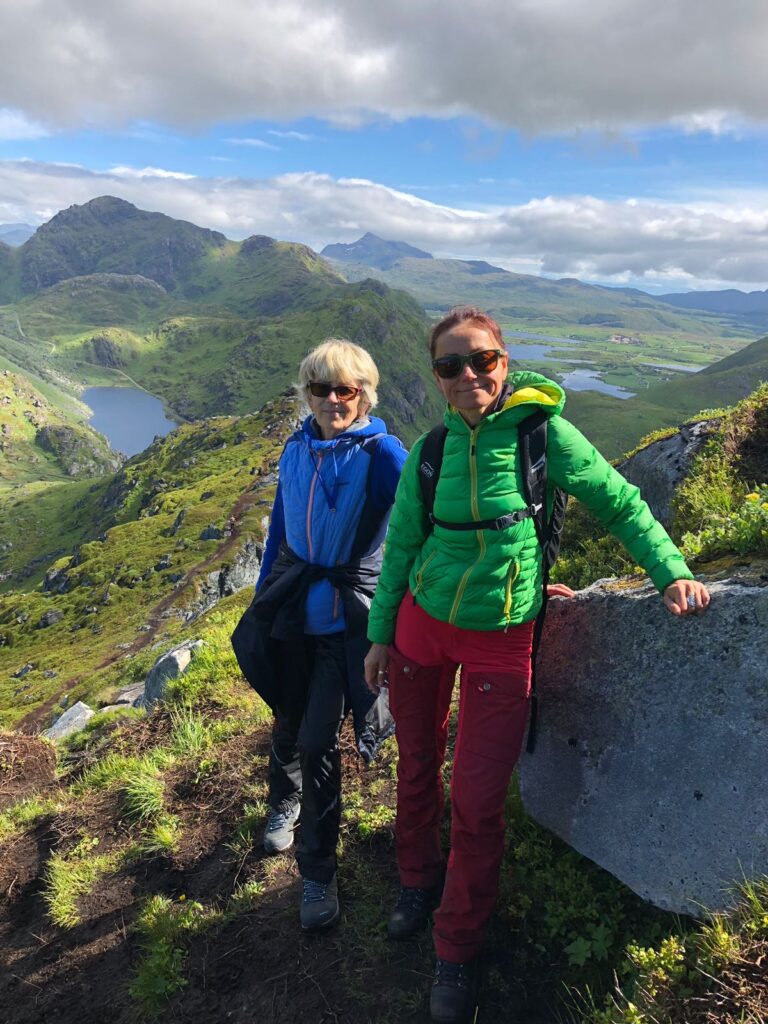

If you are ready to reconnect with nature and yourself on this amazing yoga and hiking retreat in Norway, don’t hesitate to book your spot now! Spaces are limited and filling up fast. For any questions or inquiries, please email us at mittpille@gmail.com.
You can also follow us on Instagram @yogaandhikingwithpillemitt to see more photos and stories from our past retreats.”
Yoga retreats are temporary breaks from the daily routine that typically last from the weekend to a week or more. They allow yogis to deepen their practice without the distractions of life and are an amazing opportunity to meet others who are passionate about yoga.
The yoga and hiking retreat combines yoga and physical activity outdoors. A retreat starts and ends on a specific date, meaning you will be with the same group of people every day. You go to the same classes, have meals together, and spend a day outdoors hiking together. This allows you to get to know them and develop a friendship. A yoga and hiking retreat is not just another vacation; it is a powerful experience.
A yoga retreat will help you:
- disconnect and reflect,
- deepen your yoga practice and knowledge,
- step outside of your comfort zone,
- improve your health.
If you are a beginner or not very passionate about yoga, a yoga and hiking retreat will offer you the opportunity to start with regular practice and discover how yoga can help you find balance in your everyday life.



Why yoga and hiking retreat?
"Going back to nature is going back to the origin of life, to the origins of ourselves." The philosopher Henry David Thoreau said this about connecting to your inner self. There is plenty of time for self-reflection during the long hours of walking. Being far away from home and out of our comfort zone will present some obstacles, but we might also realize what truly matters to us and what the purpose of our lives may be.
"Who am I?" is the ultimate question in yoga philosophy. This is precisely why connecting with nature and practicing yoga simultaneously form a perfect combination. Both will help you learn about your true self. The yoga and hiking retreat is a simple way to reconnect with your inner self and understand yourself better.
Read more about our yoga and hiking retreats in Norway.
Hiking versus walking the Camino de Santiago
Walking the Camino de Santiago has been and still is on a bucket list for many people. Yoga and hiking retreat is like walking the Camino but it is a softer version of the Camino way. You know where you will sleep every night and always have wi-fi when needed. You will also prepare your body for a long day outdoors with morning yoga sessions, stretch and relax your tired muscles every evening, and eat healthy and nutritious food during the journey.
However, yoga and hiking offer many of the Camino walk's benefits. Additionally, spending days in the fresh air will prevent you from becoming infected with viruses and strengthen your immune system.
Top 3 reasons why people walk the Camino de Santiago
Camino de Santiago, known in English as the Way of St. James, is a network of pilgrims' ways or pilgrimages leading to the shrine of the apostle Saint James the Great in the cathedral of Santiago de Compostela in Galicia in Spain.
Spiritual reasons
Many pilgrims walk to connect and discover the deeper meaning of life, spiritually connect with nature or themselves, or find answers to deep questions.
Disconnect to reconnect
Many of us have become disconnected and disillusioned in a world of busyness with too many obligations and long workdays. We all say we would like to disconnect a bit but typical vacations are anything but answering e-mails at the pool and watching or reading the news after dinner, we seem never to have the opportunity to truly "get away from it all". At first, it may seem strange to not constantly think about what is happening in your country or not check your phone every 15 minutes but soon you find peace and silence in the journey. Adjusting takes a few days, but the reward is clarity and peace.
Exercise and well-being
Most people have little to no experience walking long distances over many days. A popular saying is, "Your Camino begins when you sign up." You begin to research what shoes to bring, how to train and prepare your body, and what you should pack. Many people start training to become healthier and more fit for the trip.
"There is no such thing as bad weather, only bad clothing" - Swedish and Norwegian proverb.
Here I will share some tips on how to choose good hiking clothes and what to wear when hiking to keep you warm, dry, and happy during your adventures in Norway. I will not recommend any specific brands because in different regions you can find similar products from different manufacturers.
Check out our yoga and hiking retreats in Norway, and Nepal.



What to wear when hiking in summer-layers, zippers, and pockets
When I moved to Norway in 2013, I started hiking in my jeans, aerobic leggings and top, running shoes, and a light jacket. Although Norwegians thought it was strange (jeans are especially despised), I was not disturbed by it. My hikes were usually short and close to home. With time my hikes became longer and more complicated and I started to buy special hiking equipment. I discovered that the little improvements made a difference! For example, my backpacks got bigger but lighter and I replaced all my pants and jackets with ones that have ventilation zippers.
You start to notice the importance of clothing when you hike for several days in a row, your hike lasts for the whole day, or the weather changes suddenly. When you hike uphill you always get hot and sweaty. The contrast becomes clear when you reach the top of the mountain which is usually windy and cool.
If you want to sit down to eat, relax, and enjoy the view, you instantly feel the cold creeping in. On the way down your legs are already tired so you must take extra care not to stumble and fall. That means hiking at a slow pace with sweaty clothes and rubbing shoes. Suddenly you may find that hiking is not so enjoyable anymore. Fortunately, all this is avoidable when you take advice from experienced hikers.
The most important thing about hiking clothes is layering. This tried-and-true strategy helps you regulate temperature by slipping layers on and off as your activity level or the weather changes. You may not want to wear a lot of layers at the start of your hike but it’s a good idea to take them with you on every outing - you can peel off layers when you get hot but you can’t put on layers that you didn’t bring along.
The base layer should wick sweat off your skin
I am not going to talk about underwear which should be comfortable every day, not only when hiking. But I want to talk about T-shirts. Wool is very popular in Norway: summer wool, merino wool, smart wool, old fashion wool, etc. If I'm honest, I don't go along with fashion trends easily, but buying myself a light, summer merino wool T-shirt was a very good idea.
When hiking with a backpack, your shirt must have sleeves. It is very uncomfortable to feel the backpack strap under a sweaty armpit on a warm summer day. A cotton T-shirt is not the best choice because it dries slowly. I recommend a light wool or synthetic T-shirt for warm weather or a long-sleeved shirt for cooler weather. Choose materials that insulate, wick moisture, and dry quickly.
The same goes for socks. A hiking sock is crucial to prevent blisters. A hiking sock, unlike a cotton sock, provides significant protection against rubbing that your boot might cause. Low-cut socks are not a good choice for hiking, choose crew socks instead.
The middle layer should insulate
Of course, it all depends on the weather but you should always have a long-sleeved sweater or a fleece in your bag. I love fleece hoodies because I always forget my hat at home and they help to keep my head warm. I prefer light hoodies that breathe well. Pullover hoodies might be difficult to put on, so I prefer ones that have zippers.
Down-insulated jackets are my favorites because they are highly compressible and easy to pack in your bag, also down offers more warmth for its weight than any other insulating material.




The outer layer should shield you from rain and wind
The outer layer (or shell layer) protects you from wind, rain, and snow. Shells range from pricey mountaineering jackets to simple wind-resistant jackets. Most allow at least some perspiration to escape; virtually all are treated with a durable water-repellent finish to make water beads up and roll off the fabric.
Your outer shell is an important piece in stormy weather because if wind and water are allowed to penetrate to inner layers, you can get really cold. Pit zips under the armpit are again important. The ideal would be lightweight, wind, and waterproof material but usually, if you want significant protection against the rain and wind then you might need to make a trade-off on weight.

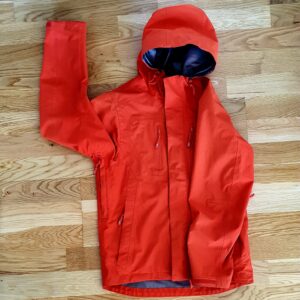


Hiking pants
I think I would love hiking pants that can be turned into shorts by unzipping the long pant legs. Unfortunately, I do not have them yet. But I have several breathable, windproof hiking pants with ventilation zippers and I love them. It is important for me that they also have pockets with zippers - the more the better. Otherwise, my keys, phone, and other things would disappear fast. The material of hiking pants is also crucial. Your pants should be lightweight, soft, stretchy, and windproof. I also have a pair for heavy rain. You mustn't have to take your boots off when you pull on your rain pants. That means a zipper on the side of the pants.

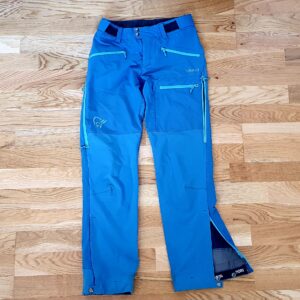


Hiking boots or shoes
One of the most important things you wear on the trail is shoes. Low-cut models with flexible midsoles are excellent for hiking on a warm summer day. I prefer lightweight, flexible, mid or high-cut hiking boots with a good grip. My boots are not 100% waterproof but they are water-resistant. Always wear your new shoes at home or on short hikes before going out on longer hikes. After hiking remove the insoles of the shoes and clean them properly. Remember to also reapply for a DWR treatment every once in a while.




Hiking hats
When you go hiking in the Norwegian mountains, you often need woolen clothes and hats – let’s face it; being situated in the Arctic Circle does have its natural effect on the temperature.
The Norwegian Trekking Association (DNT) came up with a clever way of making layers and dressing up for the cold, a lot more fun. In 2014 they launched the Norwegian Mountain Pick Up Code, which might cause your hat to give you more than warm ears – depending on which color you choose to wear.
The main rules are rather simple:
If you are single, you wear a green hat. If you are in a relationship, you wear a red hat. And if you see someone wearing a yellow hat, they might be open to a flirt.
DNT launched the Pick Up Code initially as a prank for April Fools’ Day. However, adventurous Norwegians embraced the game, and now you can use the Norwegian mountains as your very own real-life Tinder. Just make sure to not stand by a cliff when swiping someone to the right! Read more about how to behave when flirting in the mountains in Norway here.
I prefer a cup and a jacket with a jacket with a hood for hiking in the summer which protects the head from the wind and sun. However, in cooler weather, I always have a warmer hat in my bag.
"Hiking Retreats packing advice" YouTube video for Norway hiking and yoga retreat is here.
Yesterday we celebrated the World Mental Health Day with a small hike (6 hours) to Åbittinden.
Åbittinden rises with his 1396 meters above sea level and is located in the middle between Trolltind (1347 m.a.s.l.) and Blåfjellet (1192 m.a.s.l.). Driving from Molde (where we live) to the starting point of the hike takes about 1 hour and 15 minutes.
The peak is less known than the neighboring peak Trolltind and is not much visited. There is not even a decent trail to the top, not to mention directional signs. We found our way and reached the top after 3,5-hour of walking, hiking, and climbing. The weather was beautiful and warm and the view amazing.
All those long hours I spend climbing to the top of those mountains, I practice yoga in different ways. The sixth limb of yoga is concentration. You have to be 100 % present and focused during your climbing. The trail is often steep and some of those stones move under your feet. The fourth limb of yoga is pranayama, the breath control. I would lie if I said I was never afraid. I am afraid of heights and climbing steep cliffs, but then I practice my yogic breathing and pranayama. Meditation is the seventh limb of yoga, conscious management of thoughts. Being here and now.
Maybe you have heard about "Forest bathing"? It is the practice of spending time in the forest to promote physical and emotional health, very popular in Japan right now. And there is a reason why. When we are outside in nature, we experience ourselves, the world around us and feel there is something greater than us. We feel more connected to ourselves and others. Maybe we should start using a new trendy term here in Norway "Mountain Bathing"?
Research tells us that spending time in nature alleviates stress, anxiety, depression, while it boosts creativity and sharpens focus. Next time you take a hike, try deepening your experience, making it a meditation.
Mt Litlefjellet 790 m.a.s.l. - minimum effort, maximum result!
Putting one foot in front of another on a hiking trail is the best way to experience Norway. Every time I hike a new trail I fall more in love with this beautiful country.
Norway is a Scandinavian country encompassing mountains, claciers and deep costal fjords, known for hiking, fishing and skiing. From popular marked trails and tourist attractions to wild and untamed mythical landscapes the varied senery has earned Norway to well-deserved reputation as a major European hiking destination.
If you are in the Romsdalsfjord area during the summer, I recommend you to hike up to Litlefjellet Ridge, which is a light-version of Rommsdalseggen hike. This is a hike you can do with your whole family. Even younger children from 3-4 years are able to hike up to this mountain. Make sure you have plenty of time to enjoy the view, have a picnic and do some meditation on the top.
You start from the Vengedalen Valley in Isfjorden, the same valley as where the Romsdalseggen Hike starts. Continue driving further up the valley, pass Lake Vengedalsvatnet and drive towards the base of Mt Romsdalshorn. You now see the Litlefjellet Ridge on the right side, and you can also see the trail on the hillside.
The starting point and the trail are well marked, and parts of the trail are secured with chains. Mt Litlefjellet is a wide ridge between Mt Romsdalshorn and Mt Blånebba. This is a short hike with a fantastic view over the Romsdal mountains like the Troll Wall (Trollveggen), Romsdalshorn, Vengetind, and Blånebba. You also see down to the Romsdalen Valley and to Åndalsnes and the Romsdalsfjord. With a sheer one-kilometer precipice and its collection of jagged peaks, the wall is one of the most famous sights in Norway.
Reaching 780 meters above sea level, Litlefjellet (Little Mountain) sits directly across the valley from the wall. Litlefjellet also gets you up close to Romsdalshornet (1550 m), a distinctive peak popular with mountain climbers. Romsdalshorn is one of a kind, a special mountain top and not without a reason. It is one of the most famous mountain tops in the area and a classic climbing mountain in Norway. If you are interested of climbing, you can book your tour here.
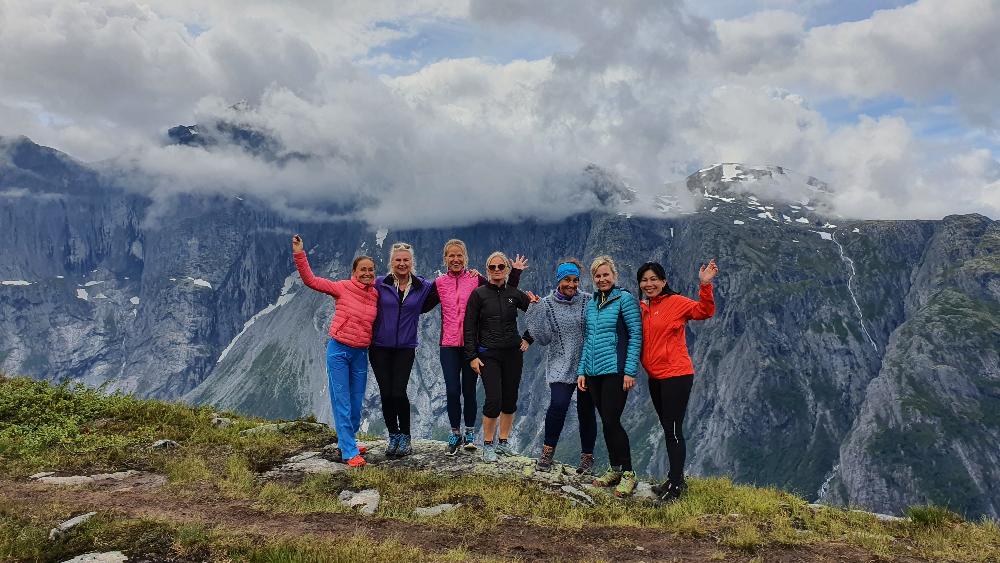


Here is a 60 min yoga video from Litlefjellet.
Here you can find some information about our guided day trips.



